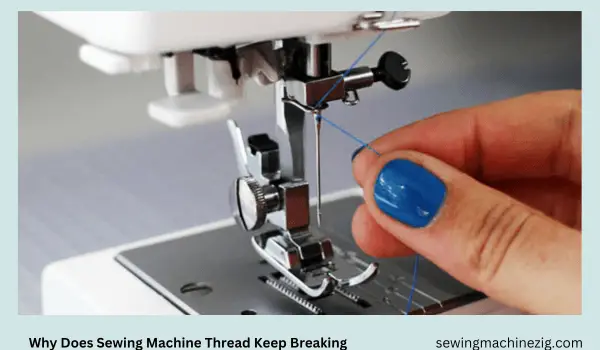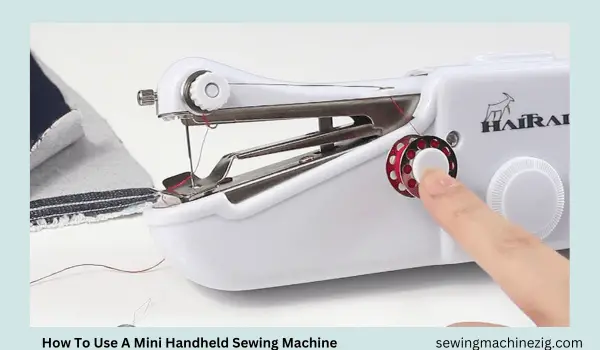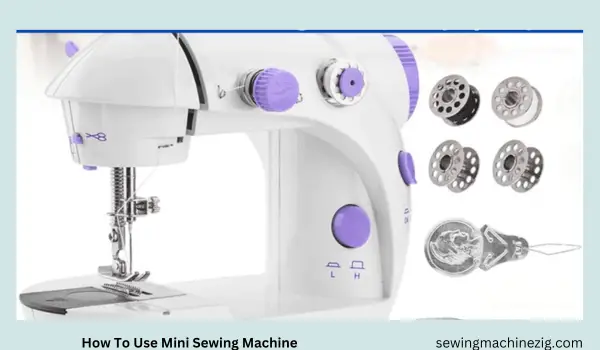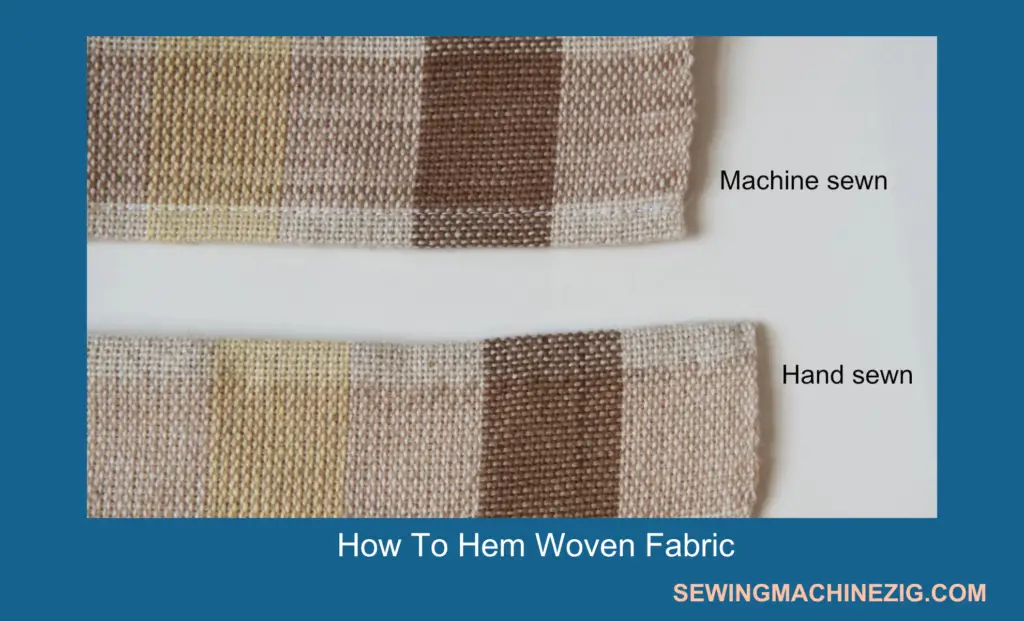
Hemming is a crucial step in the sewing process that helps to give a neat and finished look to woven fabrics. How to hem woven fabric, well hemming can be done in various ways depending on the fabric and the desired look. Hemming involves folding the edge of the fabric and sewing it down to prevent fraying and give a polished appearance to the garment. Hemming can be done by hand or with a sewing machine, and it is an essential skill for anyone who wants to sew their own clothes or make alterations.
Hemming techniques for woven fabrics
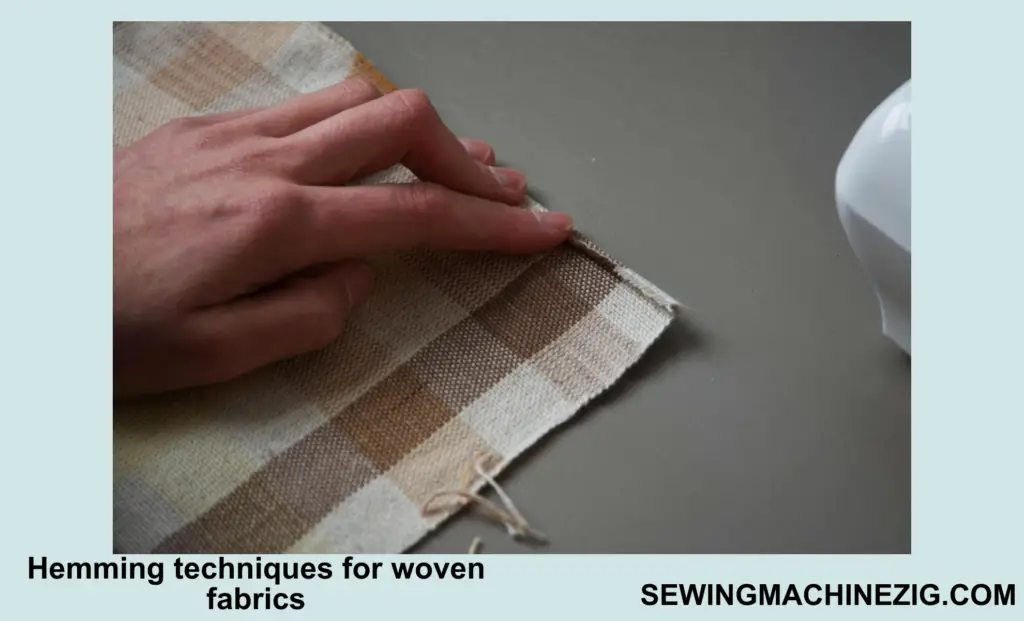
There are different types of hems, including straight hem, rolled hem, blind hem, and faced hem. The straight hem is the most basic type of hem, where the fabric is folded over and sewn in place. A rolled hem is a tiny hem that is rolled twice to create a narrow finished edge. A blind hem is a hem that is sewn in such a way that the stitching is not visible from the outside. Finally, a faced hem is a type of hem that is finished with a separate piece of fabric that is attached to the hemline.
In this article, we will discuss the various methods of How to hem woven fabric, and provide step-by-step instructions for each method. I will also provide tips and tricks to help you achieve a professional-looking hem that will give your garment a polished finish. By the end of this article, you will have the knowledge and confidence to hem your woven fabrics like a pro.
5 Ways To Hem Woven Fabric
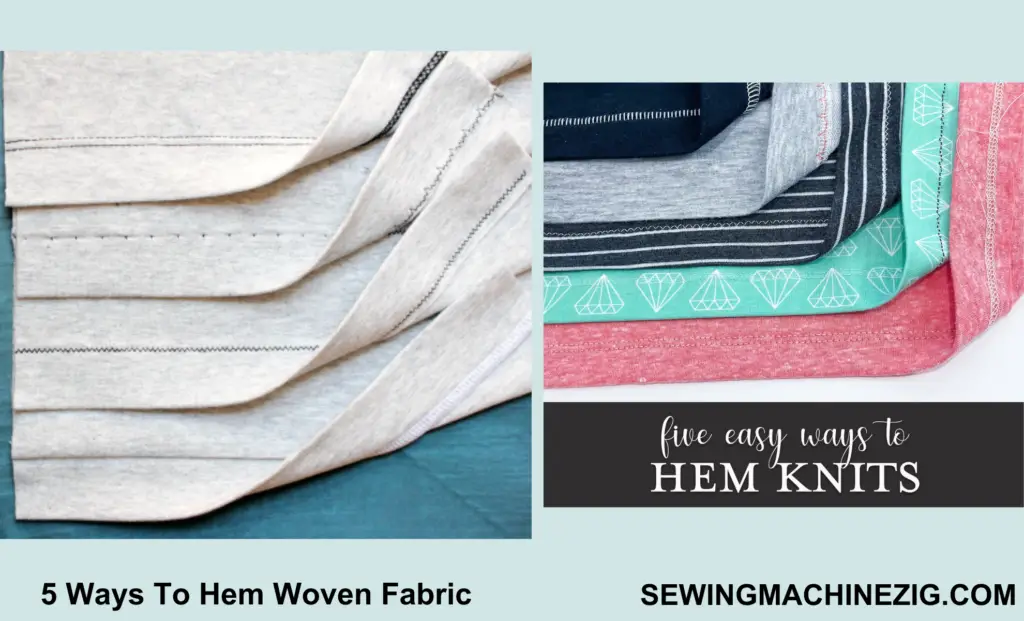
Hemming woven fabric is a fundamental sewing skill that can be used to create a neat, professional finish on clothing, linens, and other textiles. There are different ways to hem woven fabric, each with its unique benefits and techniques. In this article, we’ll explore How to hem woven fabric, and five different ways to hem woven fabric in detail.
Double-fold hemming technique
The double-fold hem is the most commonly used hemming technique and is suitable for most woven fabrics. To create a double-fold hem, first, measure the desired hem length, and then fold the fabric up to that point. Press the fold with an iron to create a crease. Next, fold the fabric over again, this time to the desired hem width, and press the fold with an iron. Pin the hem in place, and sew it using a straight stitch or a blind hem stitch.
Blind hemming technique for woven fabrics
The blind hem technique creates an almost invisible hem on the right side of the fabric. This technique is ideal for medium to heavyweight fabrics. To create a blind hem, first, fold the fabric up to the desired hem length and press it with an iron. Next, fold the fabric back on itself, creating a small fold along the hemline. Use a blind hem foot on your sewing machine to stitch along the edge of the fold, catching a small amount of the folded fabric each time. The stitches will be almost invisible on the right side of the fabric.
Rolled hem for lightweight fabrics
The rolled hem technique creates a narrow, neat hem on lightweight fabrics. To create a rolled hem, first, fold the fabric over to the desired hem width and press it with an iron. Next, fold the fabric over again, this time rolling the edge of the fabric slightly as you go. Pin the hem in place, and sew it using a straight stitch or a narrow rolled hem stitch.
Bias binding technique for hemming
The bias binding technique is a decorative way to hem woven fabric. Bias binding is a strip of fabric that’s cut on the bias, creating a stretchy edge that’s ideal for curved edges. To use bias binding, first, cut a strip of bias binding that’s approximate twice the width of the fabric’s hem. Next, fold the binding in half lengthwise, wrong sides together, and press it with an iron. Pin the binding to the fabric’s hem, and right sides together, and sew it in place using a straight stitch.
Frayed thread fringe hemming technique
The fringe hem technique is a trendy way to hem woven fabric that’s perfect for boho-inspired garments. To create a fringe hem, first, cut the fabric to the desired length, leaving an extra inch or so for the fringe. Next, use a pair of scissors to make small cuts along the hemline, leaving the frayed threads intact. Finally, use your fingers to separate the threads and create a fringed edge.
Sewing skills for hemming woven fabric
Hemming woven fabric is an essential skill for any sewer. There are different ways How to hem woven fabric, each with its own unique benefits and techniques. Whether you’re creating a double-fold hem for a classic look, a blind hem for a nearly invisible finish, or a fringe hem for a boho vibe, these hemming techniques will help you achieve a neat, professional finish on your sewing projects. this is another way How to hem woven fabric.
How to hem woven fabric by hand
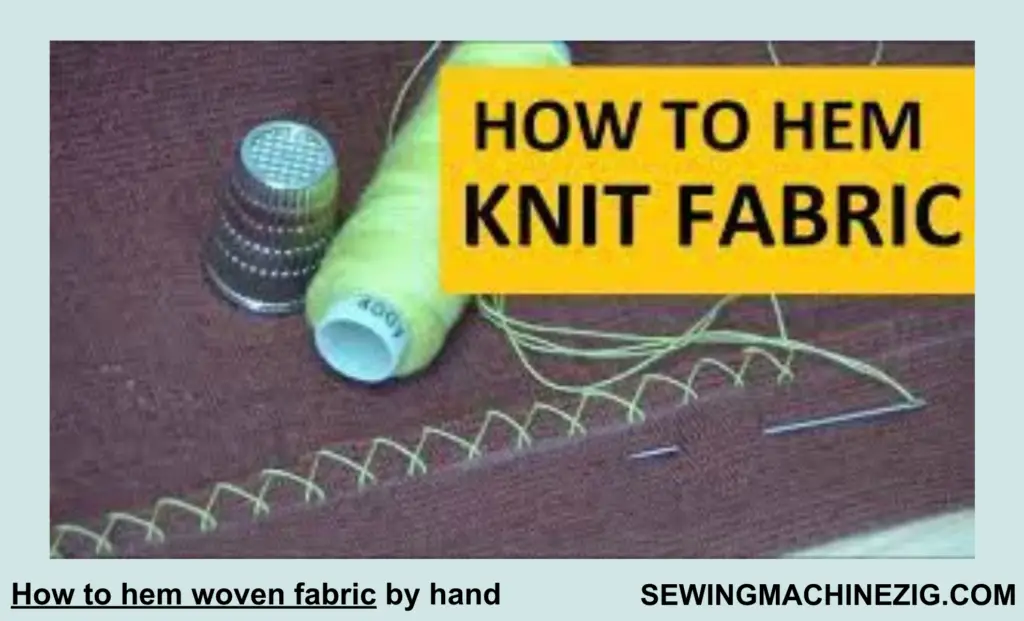
Hemming woven fabric by hand is a useful skill for anyone who enjoys sewing or working with textiles. Whether you’re repairing a tear, altering the length of a garment, or simply adding a professional finish to your sewing projects, hand hemming allows for more control and precision, hand hemming is also a quiet, portable activity that can be done anywhere, making it an ideal skill for on-the-go sewing or relaxing evenings at home. In this article, we’ll explore the step-by-step process for How to hem woven fabric, by hand, so you can achieve a beautiful, professional finish on your sewing projects.
Materials Needed:
- Woven fabric
- Thread
- Needle
- Scissors
- Ruler or measuring tape
- Pins (optional)
Step 1: Prepare the fabric
Before beginning to hem, it’s important to ensure that the fabric is clean and pressed. If needed, wash and iron the fabric before proceeding.
Step 2: Determine the hem length
Measure and mark the desired hem length on the fabric using a ruler or measuring tape. Add a few extra inches to allow for folding under and creating a neat edge.
Step 3: Fold the fabric
Fold the fabric up along the marked line, creating a double fold. Pin the fabric in place if desired, or hold it securely with your fingers.
Step 4: Knot the thread
Thread the needle and knot the end of the thread, leaving a tail of a few inches. This will prevent the thread from slipping out of the needle while you’re sewing.
Step 5: Begin stitching
Starting at one end of the hem, insert the needle into the folded fabric, hiding the knot between the two layers. Take a small stitch, then insert the needle into the fabric again, about 1/4 inch away from the first stitch. Repeat this process, creating a straight line of small stitches along the folded edge.
Step 6: Knot the thread
When you reach the end of the hem, knot the thread securely by taking several small stitches in the same place.
Step 7: Finish the hem
Trim any excess thread and press the hem with an iron to create a neat, professional finish.
Step 8: Optional variations
There are many variations to hand hemming, depending on the fabric, style, and desired finish. For example, you can use a slip stitch for a nearly invisible finish, or add decorative embroidery stitches for a unique touch. Experiment with different techniques to find the one that works best for your project.
Using these steps, you can easily make hem-woven fabric by hand, creating a beautiful, professional-looking finish for all of your sewing projects. I hope now you’re well aware of How to hem woven fabric, by hand
How to hem woven fabric by sewing machine
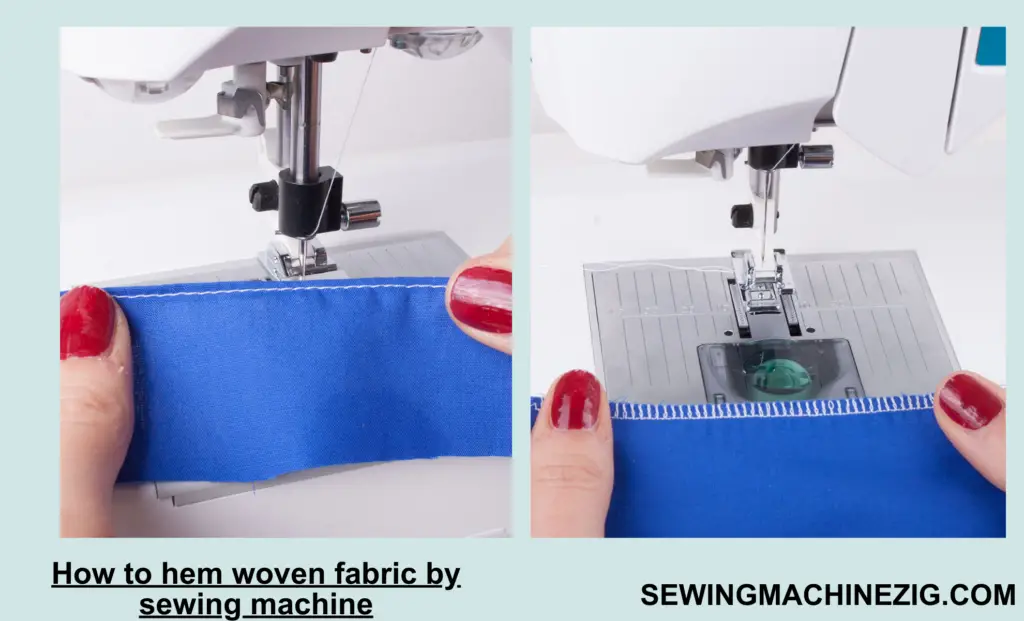
Hemming woven fabric is an essential skill for anyone who sews. It not only helps to create a neat and finished edge but also prevents the fabric from fraying. While hemming by hand is a traditional method, using a sewing machine can save time and produce a more precise result. Hemming with a sewing machine can be done quickly and easily once you know the proper steps. In this guide, we’ll walk you through the materials you’ll need and the eight steps to hemming woven fabric with a sewing machine. With these tips and tricks, you’ll be able to hem any woven fabric with confidence and ease. this is a detailed guide on How to hem woven fabric by sewing machine
Materials Needed:
- Woven fabric
- Thread
- Sewing machine
- Scissors
- Ruler or measuring tape
- Pins (optional)
Step 1: Prepare the fabric
Before beginning to hemming, it’s important to ensure that the fabric is clean and pressed. If needed, wash and iron the fabric before proceeding.
Step 2: Determine the hem length
Measure and mark the desired hem length on the fabric using a ruler or measuring tape. Add a few extra inches to allow for folding under and creating a neat edge.
Step 3: Fold the fabric
Fold the fabric up along the marked line, creating a double fold. Pin the fabric in place if desired, or hold it securely with your fingers.
Step 4: Set up the sewing machine
Choose the appropriate thread color and needle size for the fabric. Set up the sewing machine for straight stitching with a medium stitch length.
Step 5: Begin sewing
Starting at one end of the hem, place the folded edge of the fabric under the presser foot of the sewing machine. Lower the presser foot and begin sewing, making sure to keep the folded edge aligned with the needle.
Step 6: Sew along the hem
Continue sewing along the hem, removing pins as you go. When you reach a corner or a curved edge, lift the presser foot and pivot the fabric to continue sewing in the new direction.
Step 7: Finish the hem
When you reach the end of the hem, backstitch a few stitches to secure the thread. Trim any excess thread and press the hem with an iron to create a neat, professional finish.
Step 8: Optional variations
There are many variations to machine hemming, depending on the fabric, style, and desired finish. For example, you can use a zigzag stitch for a stretchy fabric or add decorative topstitching for a unique touch. Experiment with different techniques to find the one that works best for your project.
Using these steps, you can easily hem woven fabric with a sewing machine, creating a beautiful, professional-looking finish for all of your sewing projects.
Here are some additional tips to keep in mind How to hem woven fabric, whether by hand or with a sewing machine:
1. Choose the right thread color. If possible, use a thread color that matches the fabric or is a close match. This will create a neater and more polished finish.
2. Use sharp scissors or rotary cutters to cut the fabric. This will help to prevent fraying and ensure a clean edge.
3. Press the fabric before hemming. Use an iron to press the fabric flat and remove any wrinkles. This will make it easier to create a straight and even hem.
4. Use pins or clips to hold the fabric in place while hemming. This will help to ensure that the fabric stays in place and doesn’t shift or bunch up while sewing.
5. Experiment with different hemming techniques to find the one that works best for your project. There are many variations to hemming, including blind hems, rolled hems, and decorative hems.
By following these tips, you can achieve a professional-looking hem on any woven fabric project.
Conclusion:
How to hem woven fabric, hemming woven fabric is a crucial skill to have for anyone interested in sewing. Hemming not only provides a neat and finished look to your garment or project but also helps to prevent fraying and increase the durability of the fabric.
Whether you choose to hem by hand or with a sewing machine, the key is to take your time and pay attention to the details. By choosing the right thread color, using sharp scissors or rotary cutters, pressing the fabric before hemming, and experimenting with different hemming techniques, you can achieve a polished and professional-looking hem on any woven fabric project. So don’t be afraid to try hemming on your next project and enjoy the satisfaction of creating a beautifully finished piece of work. I hope this article, covered all how to hem woven fabric,
FAQs
Here are frequently asked questions about how to hem woven fabric, along with detailed answers:
Q 1: What is the purpose of hemming woven fabric?
A. Hemming is done to prevent the fabric from fraying and unraveling, as well as to create a neat and finished edge.
Q 2: Do I need a special machine to hem the woven fabric?
A. No, you don’t need a special machine to hem woven fabric. A regular sewing machine with a straight stitch and zigzag stitch function can be used to hem woven fabrics.
Q 3: What type of stitch should I use to hem woven fabric?
A. For most woven fabrics, a straight stitch or a zigzag stitch is sufficient. However, if you want a more decorative finish, you can use a blind hem stitch or a rolled hem stitch.
Q 4: Can I hem woven fabric without a sewing machine?
A. Yes, you can hem woven fabric by hand using a needle and thread. This method is more time-consuming but can produce a beautiful, hand-sewn finish.
Q 5: How do I determine the correct hem length for my fabric?
A. To determine the correct hem length, measure the distance from the raw edge of the fabric to the desired hemline. Add an extra inch or so for folding and finishing the hem. Try on the garment or hold up the fabric to ensure the hemline is at the desired length.
Q 6: Can I use fusible hem tape to hem woven fabric?
A. Yes, fusible hem tape can be used to hem woven fabric. Simply place the tape between the hemline and the fabric, and iron it on according to the manufacturer’s instructions.
Q 7: How can I prevent the fabric from puckering or stretching while hemming?
A. To prevent puckering or stretching, use a stabilizer such as tissue paper or stabilizer fabric when hemming. You can also adjust the pressure on the presser foot of your sewing machine or use a walking foot to ensure even feed of the fabric.

